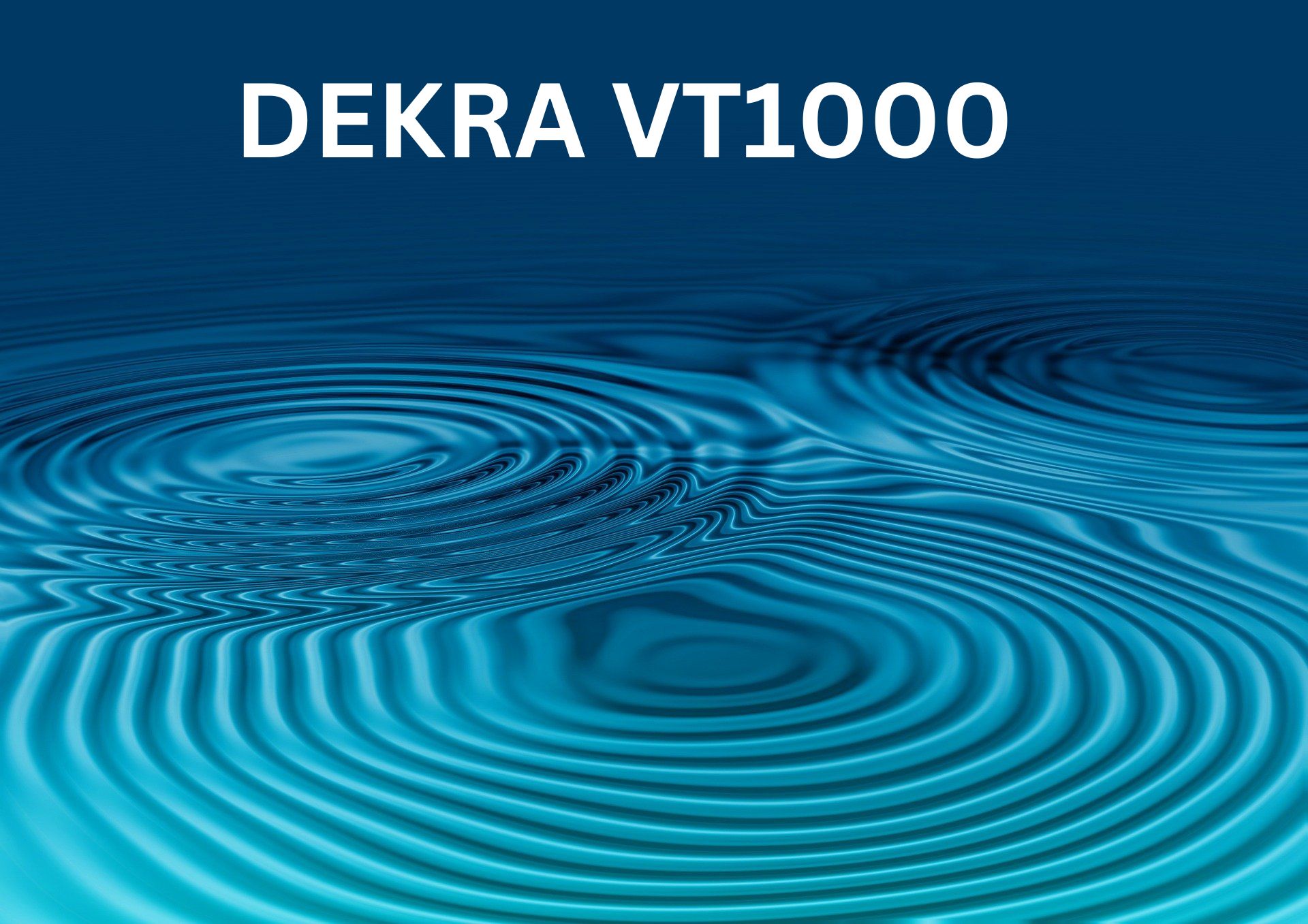Corrosion, particularly pitting corrosion, is a silent destroyer that affects countless industries, from automotive to aviation and even oil and gas. Pitting refers to localized, tiny cavities or “pits” that form on the surface of metals, often going unnoticed until significant damage occurs. If not detected in time, these pits can compromise structural integrity, leading to equipment failure, safety hazards, and costly repairs. This is where the DEKRA VT1000 steps in—a cutting-edge tool that revolutionizes corrosion detection through high-resolution imaging.
In this article, we’ll dive deep into the workings of the DEKRA VT1000, its applications across various industries, and why it’s a game-changer for early corrosion detection and prevention.
Contents
What is the DEKRA VT1000?
The DEKRA VT1000 is an advanced imaging tool designed to capture high-resolution images of pitting corrosion on metal surfaces. Developed by DEKRA, a global leader in safety and quality assurance, the VT1000 offers precise, detailed views of metal surface defects, especially those too small to be detected by the human eye.
Using high-resolution cameras and specialized sensors, the VT1000 scans metal surfaces, detects pitting, and generates detailed reports. The integrated software analyzes the captured images, flags potential issues, and suggests preventive measures or necessary repairs. This makes the VT1000 a vital asset for industries where metal corrosion can lead to significant financial loss and safety risks.
How the DEKRA VT1000 Works
The VT1000 follows a systematic process to ensure accurate detection of pitting corrosion. Here’s how the tool works:
- Scanning
The VT1000 scans the surface of metal components, such as brakes, engine parts, pipelines, and other equipment vulnerable to corrosion. The device can operate in harsh environments, identifying early signs of damage where corrosion typically forms due to exposure to corrosive substances, high temperatures, or mechanical stress. - High-Resolution Image Capture
Once the surface is scanned, the VT1000 captures high-resolution images of the metal. These images reveal pits, cracks, or wear on the material that may be invisible to the naked eye. The clarity and detail of the images are crucial for engineers and maintenance teams to assess the condition of the metal. - Image Analysis
The tool’s embedded software analyzes the images, identifying areas of concern. It processes these images to highlight even the smallest pits, ensuring nothing is missed. The analysis allows engineers to evaluate the severity of the corrosion and decide on the necessary actions. - Comprehensive Reporting
After scanning and analysis, the VT1000 generates a detailed report that includes annotated images of the affected areas. These reports help maintenance teams prioritize repairs, schedule preventive maintenance, and take appropriate measures to avoid further damage.
Applications of the DEKRA VT1000 Across Industries
The DEKRA VT1000 is a versatile tool used in several industries where metal corrosion is a critical issue. Here are the key sectors that benefit from this innovative technology:
1. Automotive Industry
Pitting corrosion in the automotive sector is commonly observed in components such as brake discs, engine parts, and suspension systems. These components are constantly exposed to environmental elements like moisture, salt, and road debris, which accelerate corrosion.
With the DEKRA VT1000, automotive technicians can regularly inspect these parts. The high-resolution images provide a clear view of any pits or cracks on the metal surfaces. By detecting corrosion early, the VT1000 helps prevent costly repairs, prolongs the life of vehicle components, and ensures passenger safety.
2. Aviation Industry
Aircraft are subjected to extreme weather conditions and environmental stress, which can lead to metal fatigue and corrosion over time. Key areas like the fuselage, wings, and landing gear are particularly susceptible to pitting.
The VT1000 enables aviation maintenance teams to inspect these critical parts without dismantling them. The tool’s non-invasive method of capturing high-res images ensures that corrosion is detected early, minimizing the risk of in-flight failures and reducing the cost of repairs.
3. Oil and Gas Industry
Pitting corrosion in the oil and gas industry is a significant concern, particularly in pipelines and storage tanks. If left unchecked, corrosion can lead to leaks, environmental damage, and costly downtime.
The VT1000 offers oil and gas operators a reliable method to monitor the condition of their infrastructure. Regularly capturing images of pipelines and tanks with the VT1000 allows operators to detect corrosion in its early stages. This helps companies avoid catastrophic failures and ensures safe and efficient operations.
4. Manufacturing Industry
Machinery and metal components in the manufacturing industry are often exposed to harsh working conditions, including high temperatures, abrasive materials, and chemicals. These factors make the components vulnerable to pitting corrosion.
By using the VT1000, manufacturers can gain detailed insights into the condition of their equipment. The tool’s high-resolution imaging helps detect corrosion early, preventing unexpected breakdowns and ensuring smooth production processes.
Common Causes of Pitting Corrosion
Pitting corrosion can be caused by various factors, most of which depend on the material’s operating environment. Here are the most common causes:
- Corrosive Exposure: Metal components exposed to moisture, salt, chemicals, or acidic environments are more likely to experience pitting corrosion.
- High Temperatures: Heat can weaken metal surfaces over time, making them more susceptible to corrosion, especially in components like brake discs.
- Mechanical Stress and Debris: Road debris or particles that get lodged in machinery can abrade metal surfaces, leading to pitting.
- Aging: Over time, metal components naturally degrade, making them more vulnerable to corrosion.
Benefits of Using the DEKRA VT1000
The DEKRA VT1000 offers several advantages that make it an essential tool for detecting and addressing pitting corrosion:
- High-Resolution Imaging: The VT1000 captures clear and detailed images, ensuring that even the tiniest pits are visible.
- Early Detection: By identifying corrosion at an early stage, the VT1000 helps industries prevent extensive damage and expensive repairs.
- Accurate Analysis: The tool’s software analyzes the images with precision, providing a reliable assessment of equipment health.
- Comprehensive Reports: Detailed reports generated by the VT1000 assist in maintenance planning and decision-making.
- Cost-Efficiency: Early detection of corrosion helps industries avoid costly repairs and equipment failure, reducing downtime and increasing operational efficiency.
Preventive Measures Against Pitting Corrosion
While the VT1000 excels at detecting pitting corrosion, industries can adopt preventive measures to minimize the risk of corrosion:
- Regular Maintenance: Conducting regular inspections and adhering to a maintenance schedule can help identify pitting before it worsens.
- Protective Coatings: Applying anti-corrosion coatings to metal surfaces can shield them from moisture, chemicals, and other corrosive elements.
- Environmental Control: Controlling environmental factors, such as humidity and exposure to harsh chemicals, can reduce the likelihood of corrosion.
Conclusion
In industries where metal corrosion poses significant risks, the DEKRA VT1000 offers an advanced solution for early detection and prevention. Its high-resolution imaging, accurate analysis, and comprehensive reporting make it an invaluable tool for ensuring the longevity and safety of metal components. By using the VT1000, industries such as automotive, aviation, oil and gas, and manufacturing can minimize downtime, reduce repair costs, and improve operational safety.
Whether it’s inspecting the brakes of a car, the wings of an aircraft, or the pipelines in an oil refinery, the DEKRA VT1000 is at the forefront of corrosion detection technology, offering a proactive approach to maintaining the integrity of metal structures.
DEKRA VT1000: Frequently Asked Questions (FAQ)
1. What is the DEKRA VT1000?
The DEKRA VT1000 is an advanced imaging tool designed to detect pitting corrosion in metal surfaces across industries like automotive, aviation, oil, and gas. It uses high-resolution cameras and specialized sensors to capture detailed images, helping identify and address corrosion early.
2. How does the DEKRA VT1000 work?
The DEKRA VT1000 scans metal components for pitting corrosion, captures high-resolution images, analyzes those images using built-in software, and generates detailed reports highlighting potential issues and suggesting preventive measures.
3. What industries benefit from the DEKRA VT1000?
Industries like automotive, aviation, oil and gas, and manufacturing greatly benefit from the DEKRA VT1000. Its imaging technology allows for early detection of corrosion, preventing costly repairs, improving safety, and extending the life of equipment.
4. Why is pitting corrosion a concern?
Pitting corrosion weakens metal structures and can lead to equipment failure. In industries where safety and efficiency are critical, such as aviation and oil, early detection is vital to preventing accidents and financial loss.
5. Can the DEKRA VT1000 detect other types of corrosion?
While the DEKRA VT1000 excels at detecting pitting corrosion, its high-resolution imaging technology can also identify other surface defects like cracks or general wear, offering a comprehensive view of equipment health.
6. What are the benefits of using the DEKRA VT1000?
The DEKRA VT1000 offers high-resolution imaging, early detection of pitting, accurate analysis with advanced software, comprehensive reporting, and cost savings by preventing expensive repairs and minimizing downtime.
7. How often should the DEKRA VT1000 be used for inspections?
The frequency of use depends on the specific environment and conditions of the equipment. Regular maintenance and inspections using the DEKRA VT1000 are recommended to catch corrosion early and prevent serious damage.
8. Can the DEKRA VT1000 be used in harsh environments?
Yes, the DEKRA VT1000 is designed to function effectively in harsh environments such as extreme temperatures, moisture, and high-stress conditions, making it suitable for industries with rigorous operational demands.
9. How can I purchase or learn more about the DEKRA VT1000?
For more information on purchasing the DEKRA VT1000 or learning about its capabilities, you can visit DEKRA’s official website or contact their sales team for detailed product insights and pricing options.











